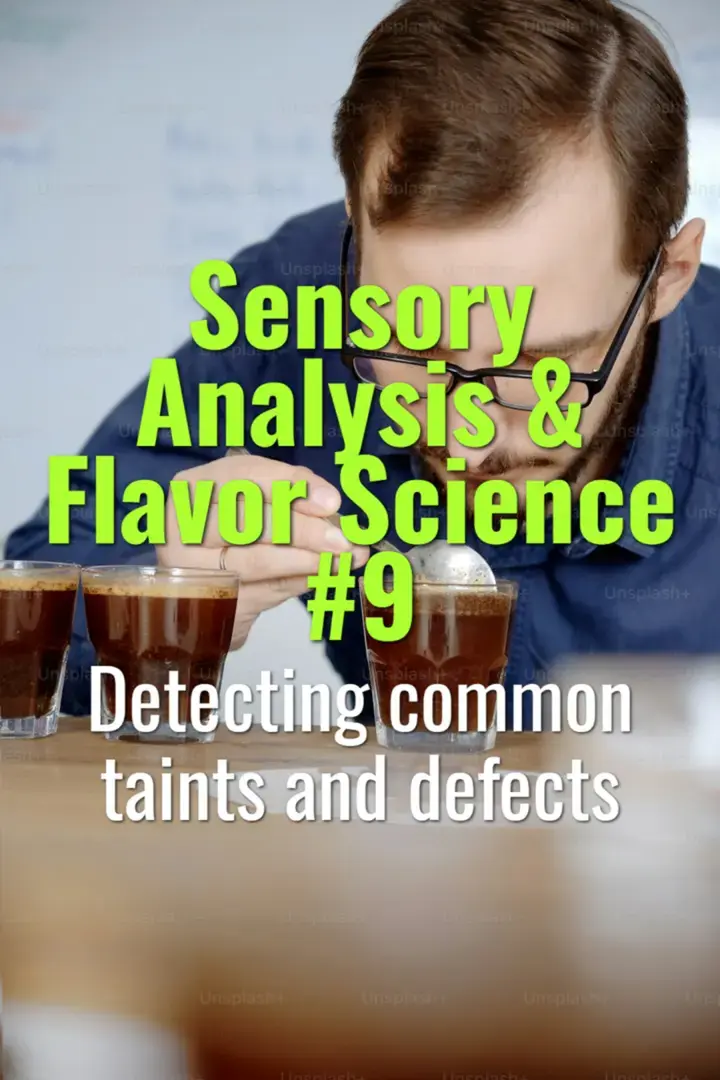Detecting common taints and defects
How to recognize, describe, and differentiate common taints and defects in coffee during sensory evaluation.
- Coffee Basics Nerds
- 2 min read
Article 9 of 12 in Sensory Analysis & Flavor Science/

What Are Taints and Defects?
- Taint: Slight off-flavor that lowers quality but is not severe.
- Defect: Strong negative characteristic that makes coffee unpleasant or undrinkable.
- Both are tracked in cupping protocols and impact coffee grading.
Common Coffee Taints
- Papery/Baggy: Stale flavor from old beans, poor storage, or exposure to oxygen.
- Bready/Grainy: Underdeveloped roast, insufficient Maillard reactions.
- Woody: Aged green coffee, loss of freshness.
- Rubbery: Low-grade robusta or improper processing.
Common Coffee Defects
- Phenolic: Medicinal, clove-like, from contamination or processing errors.
- Ferment: Over-fermentation → sour, rotten fruit, vinegar notes.
- Moldy/Musty: From damp storage or fungal contamination.
- Quakers: Unripe beans → peanutty, papery taste.
- Smoky/Ashy: From excessive smoke contact during roasting or drying.
- Earthy: Common in poorly processed coffees, especially with unwashed beans.
Detection in Practice
- Dry Aroma: Baggy or papery taints often first detected here.
- Wet Aroma: Ferment or mold defects are stronger when coffee is brewed.
- Taste & Aftertaste: Note persistence of unpleasant flavors—defects linger.
- Consistency Across Cups: Uniform defects indicate systemic issue; isolated defect may be cup-specific.
Impact on Quality
- Specialty coffee: Allowed zero primary defects per 350 g sample.
- Defects reduce cupping scores sharply.
- Some mild taints may be tolerated in commercial grade but never in specialty.
Practical Tips
- Train palate by tasting defect reference samples (e.g., SCA defect kit).
- Differentiate between roast-caused vs green coffee-caused defects.
- Document defect type and intensity for QC records.
Summary
Detecting taints and defects requires careful sensory focus on aroma, flavor, and aftertaste. Recognizing notes like papery, ferment, moldy, or phenolic helps maintain quality standards and ensures only clean, specialty-grade coffee reaches customers.
You might also like:
- Tags:
- Green Coffee
- Specialty Coffee
- Practical Tips
- Cupping Scores
- Specialty Grade
- Aroma Flavor
- Maillard Reactions
- Requires Careful
- Commercial Grade
- Grade Coffee
- Impact Coffee
- Poor Storage
- Helps Maintain
- Quality Standards
- Defects Phenolic
- Maintain Quality
- Quality Specialty
- Coffee Brewed
- Coffee Reaches
- Processed Coffees
- Flavor Aftertaste